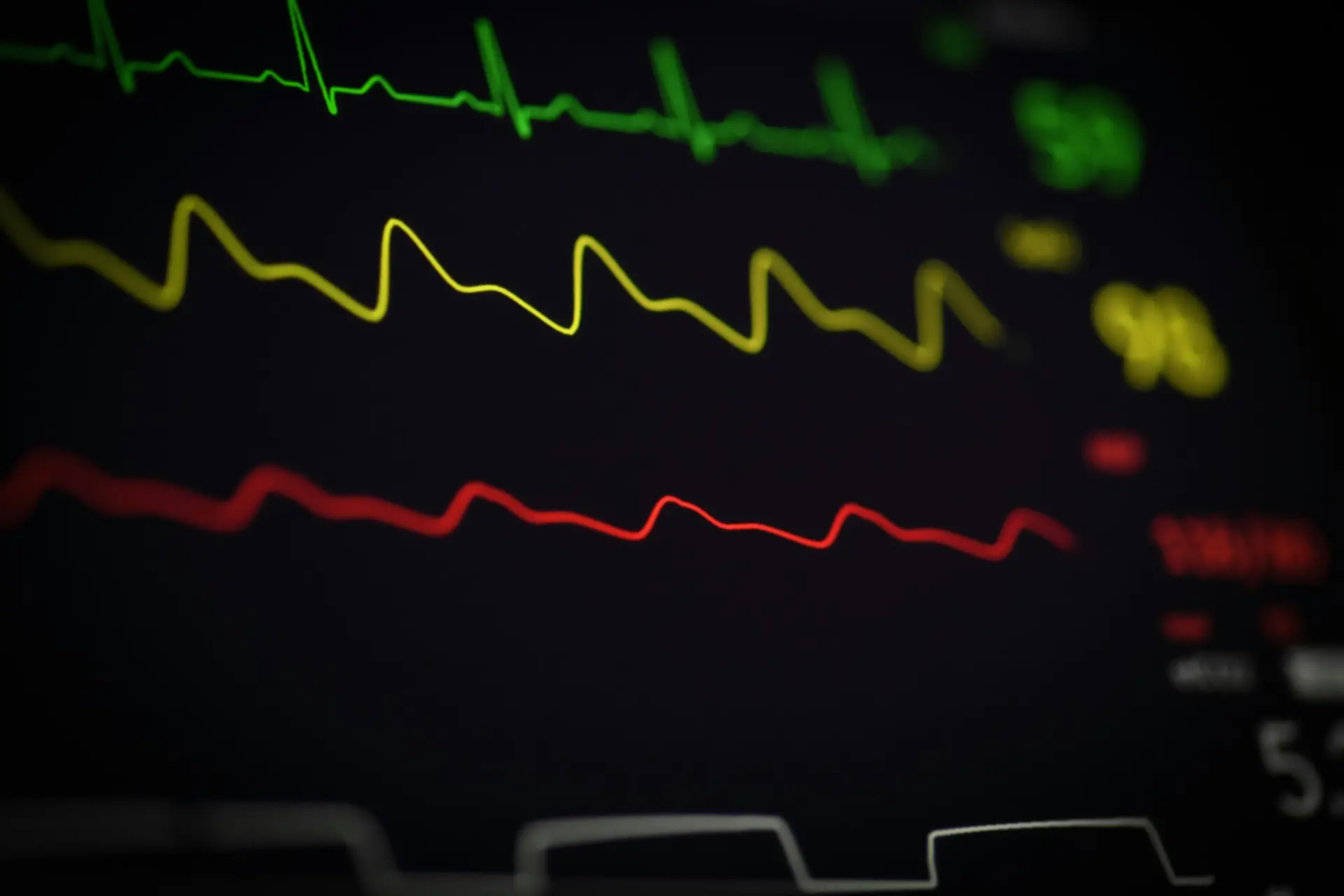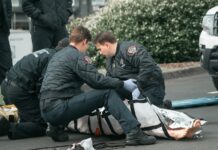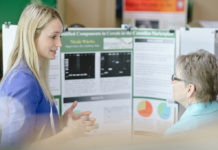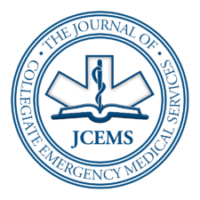The University of California, Davis Fire Department’s (UCDFD) experience obtaining the COVID-19 vaccine as a collegiate fire and emergency medical service (EMS) agency presented unique challenges. The objective of this piece is to highlight the barriers and solutions we faced during vaccine distribution. Key components of our successful vaccine program for EMS providers in an evolving pandemic environment included strategic planning of logistics supporting group appointments and protected time during shifts to attend vaccination appointments.
UCDFD provides emergency medical services, fire suppression, technical rescue, hazardous materials mitigation, and community risk reduction services for the collegiate campus and augments similar services in surrounding communities. The department is staffed by career firefighters, student firefighters, and student emergency medical technicians (EMTs). The university consists of a main academic campus, a medical campus, and satellite research facilities throughout California. The fire department is located on the academic campus. The medical campus is separated by 20 miles from the academic campus, a drive which ranges from 30 to 45 minutes, traffic dependent.
The medical campus obtained a supply of COVID-19 vaccines before the main campus, thus becoming the initial distribution site. Per the Centers for Disease Control and Prevention (CDC), as well as state and university vaccination plans, firefighters and EMTs are in the first priority group for COVID-19 vaccine access—classified as the phase 1A vaccine group. Therefore, as university affiliates, providers in the UC Davis collegiate EMS agency were offered early access to COVID-19 vaccines available at the medical campus.
There were significant benefits to vaccination through the UC Davis Medical Center for our collegiate EMS agency. One was the early arrival of the vaccine. Distribution at the medical center began approximately one month before other EMS agencies in the area had access to the vaccine. Also, the medical center was able to support a 24-hours-a-day schedule, which enhanced flexibility and availability in scheduling. Another benefit was the pre-existing record-keeping capacity through occupational health for our employees. The pre-existing medical record system used by the university to manage employee health profiles precluded the need to newly account for employees, expediting the vaccination process. In addition, employees voiced satisfaction that their vaccination status automatically merged with their electronic health record.
We offered our EMTs and firefighters the option to obtain their vaccination during a shift, conferring additional benefits. First was limiting the impact on the employees’ time off duty. Second was the ability to vaccinate as many employees as possible as soon as possible. In addition, there was consideration that peer support could enhance interest in the vaccine. If employees were asked to get their vaccine on their own time, this may have led to fewer members getting vaccinated.
There were several challenges with using the medical center for vaccination. When crew members got vaccinated during a shift, the one-hour round trip required taking an emergency response unit out of service. This was managed by taking one unit out of service and maintaining coverage with the other unit to keep the department in service. This process was coordinated by the county inter-agency automatic and mutual aid systems to ensure no lapse in coverage occurred.
An unforeseen impediment to this plan was that the medical campus vaccine scheduling system was conducted exclusively on an individual basis. This resulted in crew members on the same shift having appointments spread across more than an hour, causing unacceptably long lapses in service. Thanks to early collaboration with medical center clinic schedulers, crews were instead able to be accommodated as a group. The vaccine clinic was heavily staffed with limited appointments at this early phase in the process. Due to this, the staff was able to let all of the crew members into the vaccine clinic at the same time without undue burden on the clinic or shifting appointments.
Our approach to immunization for our collegiate EMS department was largely successful. Our first responders completed immunizations about one month ahead of other local fire and EMS providers and achieved a high rate of vaccination. We also had some employees change their decision to be in favor of vaccination when the crew was vaccinated as a group. We have learned lessons that will enhance the success of collegiate EMS agencies during future mass, contemporaneous vaccination events. Group appointments should be readily accessible to minimize the time a crew is out of service. Protected time during a shift also enhances the accessibility of the vaccine. Crews attending appointments together led to employees getting vaccinated who otherwise may not have. In future efforts, we hope to create small mobile distribution units to further minimize time out of service while maintaining the advantages of providing group vaccination during work hours. Overall, our experience was that partnering with an academic medical center facilitated early vaccination.
Author & Article Information
Lisa Mills, MD is the Medical Director for the University of California – Davis Fire Department since 2018. Nathan Trauernicht, MPA, BS FPST, CFO, CEMSO, CTO, MIFireE, CA certified Fire Chief #30 is the Fire Chief for University of California – Davis, providing overall leadership and direction to a department that serves a population of over 40,000. He has served the fire service since 1993. Nathaniel Hartinger is the Deputy Fire Chief for the University of California – Davis Fire Department. He directs the Operations and Safety Division and has served the department since 1999.
Author Affiliations: From the University of California, Davis Fire Department – in Davis, CA (L.M., N.T., N.H.).
Address for Correspondence: Lisa Mills | Email: ldmills@ucdavis.edu
Conflicts of Interest/Funding Sources: By the JCEMS Submission Declaration Form, all authors are required to disclose all potential conflicts of interest and funding sources. All authors declared that they have no conflicts of interest. All authors declared that they did not receive funding to conduct the research and/or writing associated with this work.
Authorship Criteria: By the JCEMS Submission Declaration Form, all authors are required to attest to meeting the four ICMJE.org authorship criteria: (1) Substantial contributions to the conception or design of the work; or the acquisition, analysis, or interpretation of data for the work; AND (2) Drafting the work or revising it critically for important intellectual content; AND (3) Final approval of the version to be published; AND (4) Agreement to be accountable for all aspects of the work in ensuring that questions related to the accuracy or integrity of any part of the work are appropriately investigated and resolved.
Submission History: Received March 26, 2021; accepted for publication July 12, 2021.
Published Online: August 10, 2021
Published in Print: August 10, 2021 (Volume 4: Issue 1)
Reviewer Information: In accordance with JCEMS editorial policy, Advice and Practice manuscripts are reviewed by the JCEMS Editorial Board and, as needed, independent reviewers. JCEMS thanks the Editorial Board members and independent reviewers who contributed to the review of this work.
Copyright: © 2021 Mills, Trauernicht & Hartinger. This is an open access article distributed under the terms of the Creative Commons Attribution 4.0 International (CC BY 4.0) License, which permits unrestricted use, distribution, and reproduction in any medium, provided the original author and source are credited. The full license is available at: https://creativecommons.org/licenses/by/4.0/
Electronic Link: https://doi.org/10.30542/JCEMS.2021.04.01.02








